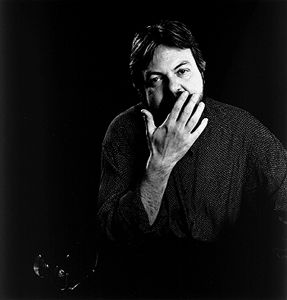Best-Sellers in French
Although the best-seller in the modern sense of the word is a relatively recent phenomenon in French Canada, there have always been popular novels which reached a wide readership in translation or in European editions. Sales figures are rarely available for the early period, but it is possible to establish a list of the most popular money-makers. In general, the 19th century is characterized by the fashion for historical romance and adventure stories, while in the 20th century this factor is compounded by the role played by translation and especially literary prizes such as the Governor's Literary Award in the creation of a best-seller.
Demographic patterns have always obliged the professional writer in French Canada to aim for an international audience, and it is not surprising that 19th-century best-sellers were often written by European immigrants and exiles primarily for foreign consumption. Henri-Émile Chevalier (1828-79) published his "romans-feuilleton," or dime novels, in the series "Drames de l'Amérique du Nord." The most lucrative of his many adventure tales about pirates, natives and historical figures was L'Ile de Sable (1862), retitled Trente-neuf hommes pour une femme: Épisode de la colonisation du Canada, and widely reprinted in Paris and in an American translation. The popularity of books exploiting North American local colour dates back to Champlain's Des sauvages (1603) and survives well into the 20th century.
The French writer Maurice Constantin-Weyer (1881-1961) is remembered for his series "L'Epopée canadienne," and won the Prix Goncourt 1928 for his "Canadian" novel Un Homme se penche sur son passé (1928). More recently, Anne and Serge Golon have achieved tremendous popularity with their juvenile series set in 17th-century New France, notably with Angélique et le nouveau monde (1967).
The most famous best-selling novel written by a foreigner but considered part of the French Canadian canon is, of course, Louis Hémon's Maria Chapdelaine (1916). Until recently the 1921 translation by William H. Blake offered most English Canadians their only exposure to the fiction and culture of French Canada.
A number of Québécois wrote historical fiction which reached a fairly wide readership in the 19th century. Their work tends to be eclipsed today by the more serious "roman du terroir" then promoted by the church and now recognized by the critics. These historical romances include the works of Philippe-Joseph Aubert de Gaspé (Les Anciens Canadiens, 1863) and Laure Conan (pseudonym of Félicité Angers). The latter writer, who lived in retirement in La Malbaie, was one of the first professionals to support herself entirely by her writing income.
Rosanna Leprohon (née Mullins), whose "de Villerai" trilogy achieved commercial success in French translation but not in the original English version, was enthusiastically adopted by French readers as late as the 1920s.Le Manoir de Villerai (installments 1851, book form 1861), frequently reprinted in French, has yet to appear in book form in the original English.
The roman du terroir, in ironic or sensationalized versions, experienced a surge of popularity in the 1930s, when its life span was extended by the emergence of radio drama. The most famous and beloved of these was undoubtedly Un Homme et son péché (1933) by Claude-Henri Grignon; the radio serial gave way to a long-lived television series. Grignon's cousin Germaine Guèvremont scripted her own prize-winning novel Le survenant (1945) and its sequels for the less popular but equally long-lived radio-television series. The most durable of novels in this tradition is Trente arpents (1938) by "Ringuet" (Philippe Panneton), a critical as well as a popular success, and translated into English and German following its reception of the Prix David, Viking and Governor General's awards.
Radio encouraged the popularization of new literary genres during the 1930s and 1940s, assisting Gratien Gélinas with the sales of his "Fridolin" texts and Émile Coderre with the publication of poems by his persona "Jean Narrache." Urban realism emerged with Roger Lemelin's award-winning novel Les plouffe (1948), which launched the successful radio-television series of that name in 1952. Lemelin's success was surpassed only by the popular and critical acclaim of Gabrielle Roy's Bonheur d'occasion (1945), translated into many languages following its reception of the Prix Fémina.
The dry period between the war and the Quiet Revolution was spanned by the dime novels of Pierre Daignault, who as "Pierre Sauriol" authored, from 1947 to 1966, over 900 weekly episodes narrating the spying adventures of "Agent IXE-13" in the pages of Éditions Police-Journal. Daignault sometimes collaborated with Yves Thériault, the most prolific of professional writers to establish a reputation during this period. His 2 critically acclaimed novels about native peoples, Agaguk (1958) and Ashini (1961), are joined by over a thousand stories and novellas in which Thériault explores the darker, primitive drives of sex and violence and their reflection in Québec society.
The regional best-seller finally emerged in full force as a byproduct of the cultural nationalism of the late 1960s, as witnessed by the success of Jacques Godbout's Salut Galarneau ! (1967), Roch Carrier's La guerre, yes sir ! (1968) and Anne Hébert's Kamouraska (1970), among others. In the true sense of the word, however, the French Canadian best-seller did not fully emerge until the late 1970s: since the publication of Antonine Maillet's Pélagie-la-Charrette (1979) and Yves Beauchemin's Le Matou (1981), local authors can now aspire to reach a wide, international readership by employing their own idiom and by dramatizing material peculiar to French North America. As the first novel by a Canadian to win the Prix Goncourt, Pélagie was assured the considerable sale it merited; however, it is Beauchemin who can now claim the distinction of having sold a million copies of a French Canadian novel.
See also Popular Literature in French.

 Share on Facebook
Share on Facebook Share on X
Share on X Share by Email
Share by Email Share on Google Classroom
Share on Google Classroom


